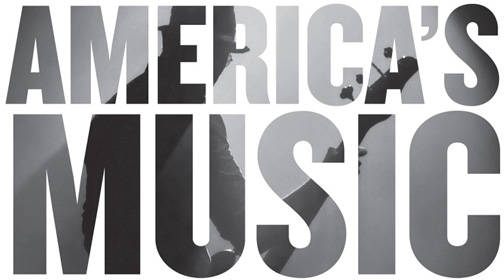

America's Music:
A Film History of Our Popular Music From Blues to Bluegrass to Broadway

Latin Rhythms From Mambo To Hip-Hop
Thursday, February 14, 2013, 6:30 p.m., Warch Campus Center Cinema
Before you go: read an introduction to Latin Rhythms From Mambo to Hip Hop
Read/Listen to/View more about Latin Rhythms From Mambo to Hip Hop
 The four-hour series, Latin Music USA narrated by Jimmy Smits, traces the vibrant history of Latin music’s expression and influence in America. Episode One, Bridges presents the story of Afro Cuban jazz and mambo as they developed in the dance halls and nightclubs of New York City.
The four-hour series, Latin Music USA narrated by Jimmy Smits, traces the vibrant history of Latin music’s expression and influence in America. Episode One, Bridges presents the story of Afro Cuban jazz and mambo as they developed in the dance halls and nightclubs of New York City.
This film excerpt explores mambo, the Cuban hybrid of traditional danson fused with syncopated Afro-Caribbean rhythms that migrated to New York City from Havana in the 1940s. Further innovated by the great barrio-born Latin band leaders of the time, including Perez Prado and Tito Puente, mambo became a huge music and dance craze that swept the country.
The film explores how mambo loosened the stiff social and musical rules of the “country club culture” of the time. Especially in New York, mambo’s popularity across classes and ethnic groups integrated the dance floor and helped prepare the way for a more open and less restrictive social interaction between the sexes. Mambo was eventually mainstreamed by the music industry and by television (shown through a humorous scene from I Love Lucy). By the 60s, rock and roll began to capture its young adherents and the music scene changed.
But the impact of mambo persisted. The film portrays the influence the music had on the next generation of musicians, Latin and non-Latin. In a series of direct musical comparisons, the film reveals Latin chord progressions, base lines and rhythms infiltrating rock, R & B, even country music, and forming the foundation of hit songs like “Louie Louie,” “Satisfaction” and “Daytripper”.

**This film contains language that may be considered offensive**
The exuberant documentary From Mambo to Hip Hop: A South Bronx Tale celebrates the cultural life of one of America’s worst urban slums in the 1970s, New York’s South Bronx. It was here, home to many Latin performers from mambo’s heyday, that hip hop originated.
In the devastation of the South Bronx in the 1970s, gang participation was almost total. This film excerpt begins in 1973, when gang leaders held a peace conference to decry the inhuman conditions they lived under. Hip hop was created and performed first by Jamaican and African American youth, and then Latinos, in abandoned parks, razed neighborhoods and burned-out buildings, as an alternative to gang violence. As one of the early artists says in the film, “We were either gonna start hip hop, or start a revolution.”
Break dance competitions and battles of songs and words redirected gang fighting into creative expression and brought a measure of fame to its most successful artists. Through candid and often humorous interviews with hip hop’s founding artists and performers, including Kid Freeze, D.J. Charlie Chase, Popmaster Fabel Pabon and Bom 5, the film demonstrates how hip hop, like mambo before it, both reflected and defied the ghetto status and economic deprivation of its creators. A twenty-four minute excerpt from the film will be shown.
DJ KSlay photo by Henry Chalfant
Be sure to attend the fourth viewing/discussion session on Thursday, February 21, Rock.
“America’s Music” is a project by the Tribeca Film Institute in collaboration with the American Library Association, Tribeca Flashpoint, and the Society for American Music. “America’s Music” has been made possible by a major grant from the National Endowment for the Humanities: Exploring the Human Endeavor.










